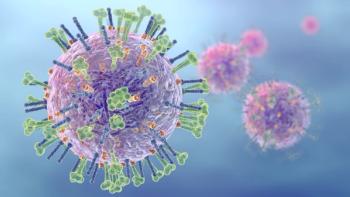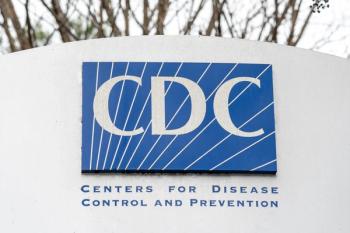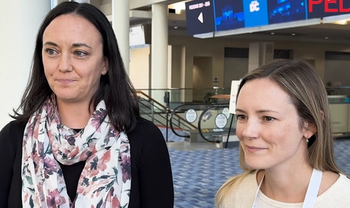
Review some of the top stories from the Contemporary Pediatrics website over the last week, and catch up on anything you may have missed.

Review some of the top stories from the Contemporary Pediatrics website over the last week, and catch up on anything you may have missed.

Take a look back at some of the top-performing stories from Contemporary Pediatrics with this review article. Stories featured in this article are re-capped and directly link to our most-viewed articles from August through October 2023.

The FDA has approved abatacept (Orencia) for patients aged ≥2 years with active psoriatic arthritis (PsA), a condition causing joint damage in pediatric patients, offering a new treatment option for juvenile PsA, benefiting young patients, caregivers, and healthcare professionals.

For the first time since 2001 to 2002, a year-to-year increase of the infant mortality rate was observed in the United States from 2021 to 2022. The provisional 20,538 infant deaths reported in 2022 were a 3% increase compared to 2021.

The importance of follow-up meetings for youth patients discharged from emergency departments is highlighted by new research.

Longer-term data was recently released for dupilumab as a treatment for eosinophilic esophagitis (EoE) in children aged 1 to 11 years, demonstrating a similar safety and efficacy profile for up to 1 year of treatment. A supplemental Biologic License Application was accepted by the FDA in September 2023 with a Priority Review designation.

A usability study demonstrated that individuals older than 18 years could self-administer the intranasal treatment or administer it to eligible patients aged 2 to 49 years, when given instructions and no additional guidance.

A child with profound genetic hearing loss was dosed with an investigational otoferlin gene therapy (DB-OTO), the first patient dosed in a phase 1/2 trial evaluating the treatment. The child experienced improved auditory response at week 6 with no concerning safety signals.

Vamorolone, oral suspension 40 mg / ml, has been approved by the FDA to treat Duchenne muscular dystrophy (DMD) in patients aged 2 years and up, according to Santhera Pharmaceuticals.

Donna Hallas, PhD, PPCNP-BC, CPNP, PMHS, FAANP, FAAN, shares her thoughts on the Contemporary Pediatrics' October 2023 vaccine issue.

Review some of the top stories from the Contemporary Pediatrics website over the last week, and catch up on anything you may have missed.

In this interview with Contemporary Pediatrics®, Lauren Lanzon, MSW, MA, BCBA, clinical trainer, Carolina Behavioral Innovations, explains how technology and software is helping families following an autism diagnosis in their child.

The combination vaccine candidates demonstrated a safety profile consistent with Pfizer’s COVID-19 vaccine. A phase 3 trial is anticipated to commence in the coming months, according to a press release from Pfizer.

The Centers for Disease Control and Prevention is advising providers to prioritize 100 mg doses of nirsevimab, a monoclonal antibody FDA-approved to prevent respiratory syncytial virus (RSV), for infants at the highest risk of severe RSV disease.

Meghan Harrison, DO; and Brittany Perry, DO, discuss including early autism screening in the primary health care setting, following their session presented at the 2023 American Academy of Pediatrics National Conference & Exhibition, held in Washington DC.

While at the 2023 American Academy of Pediatrics National Conference & Exhibition, Steven Selbst, MD, spoke with Contemporary Pediatrics® about current trends in pediatric emergency medicine, and highlighted the ongoing mental health crisis.

Susan J. Kressly, MD, FAAP, shares tips and aspects of her session, "How to Ensure You Will Be Paid What You’re Worth," presented at the 2023 American Academy of Pediatrics National Conference & Exhibition, in this Contemporary Pediatrics® interview.

"I was honored this year, really truly honored, to receive the Jim Seidel Distinguished Service Award for the section of emergency medicine," said Contemporary Pediatrics Editorial Advisory Board member Steven Selbst, MD at the 2023 American Academy of Pediatrics National Conference & Exhibition.

A recent study presented at the 2023 American Academy of Pediatrics National Conference & Exhibition evaluated how clinicians can ask patients' sexual orientation and gender identity for EHR documentation.

In recent research highlighted at the 2023 American Academy of Pediatrics National Conference & Exhibition, investigators sought to evaluate the level of access and marketing of Delta-8 THC (D8) to minors online.

In this Contemporary Pediatrics interview, Michelle Loy, MD, FAAP, recaps her session, "Culinary Medicine: Using Food for Physical, Mental, and Environmental Health" presented at the 2023 American Academy of Pediatrics National Conference & Exhibition in Washington DC.

Steven Selbst, MD, provides a quick update on what he has noticed in his hospital when it comes to RSV-associated emergency department visits and how they compare to this time last year, during the "tripledemic." This interview was conducted at the 2023 American Academy of Pediatrics National Conference and Exhibition in Washington DC.

In this Contemporary Pediatrics® interview, Scott Sicherer, MD, FAAP, discusses his session, "Feed the Baby! Essential Advice for Food Introduction and Allergy Prevention," presented at the 2023 2023 American Academy of Pediatrics National Conference & Exhibition.

At the 2023 American Academy of Pediatrics National Conference & Exhibition, Eric J. Sigel, MD, FAAP, professor of pediatrics, University of Colorado School of Medicine, explains his session "Suicide and Gun Violence: What We Know, What We Can Do."

Leah K. Middleberg, MD, FAAP, explains her research on magnet ingestion and socioeconomic disparities, which was recently presented at the 2023 American Academy of Pediatrics National Conference & Exhibition.

At the 2023 American Academy of Pediatrics National Conference & Exhibition, Paul V. Williams, MD, FAAP, explains his session "Tell Me it Ain't So: Delabeling Penicillin Allergy," and how general pediatricians can make a difference by removing a false penicillin allergy label from a child's medical record.

A recent study was highlighted at the 2023 American Academy of Pediatrics National Conference & Exhibition that shed light on the long-term impact of very preterm birth on the health-related quality of life (HRQOL) of infants and identified key determinants.

George J. Fuchs, III, MD, FAAP, explains how certain branding and labeling can lead parents to purchase toddler formula, though products are not nutritionally complete and lack FDA regulations present in infant formulas. This interview was conducted at the 2023 American Academy of Pediatrics National Conference & Exhibition in Washington DC.

Eculizumab and anakinra should be considered in critically ill patients with severe infections that require immunomodulating therapies for life-threatening dysregulation, according to a poster session at the 2023 American Academy of Pediatrics National Conference & Exhibition.

The Complete Response Letter (CRL) is based on additional efficacy data required by the FDA, according to Sanofi and Regeneron.